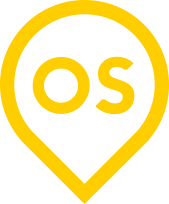Three things to know about your first IoT project
In October of 2019, I started work at Outside Source. I had been in software development for almost twenty years but had never worked on an IoT project.
I quickly discovered that building software applications for connected products could be a whole different animal compared to what I had done in the past.
Here are three important lessons that I learned in my first year:
1. It will be complex
Developing your first connected product won’t be like building a typical web or mobile application - it will likely be much more complex. The analogy we like to use with our customers is that IoT products are a lot like an iceberg: you only see 10% of its entirety. While a customer’s experience with a connected product will be simple, the complexity lies just out of view.
Let’s take a “smart” garage door as an example. You have an app that controls your garage door. You can see in the app if the door is up or down, and you can even control the door just as you would with a physical garage door opener.
Beyond those simple functions, there is a lot going on. You likely need a chipset as well as embedded software on the garage door motor to connect with the internet and process commands. In addition, you will need to set up a cloud infrastructure to save device state and receive instructions from the mobile application. Then there is the mobile application itself, which may require a native development on multiple platforms (iOS and Android). It may also need to connect with cloud API’s.
Developing these three different aspects of an IoT solution requires three different skill sets, and likely, three different teams. If you introduce other features into your connected product such as data analytics, artificial intelligence or voice assistant integration, then the bottom of the iceberg gets even larger.
2. Don’t gloss over Product Design
Many times, budget constraints or tight timelines for getting a product to market will cause a company to “go cheap” on the product design phase of a project. This is a recipe for disaster, and is the most likely contributor to an IoT project going sideways.
Because of the multiple work streams involved, taking time to complete a full Product Design phase will give your IoT project the best chance to deliver a quality product on-time and on-budget.
A Product Design phase should happen at the beginning of any IoT project and should include:
Persona definition (who will be using the app and what is important to them?)
Document the user journey (what are the work flows and what context will the user be using the product)
Technical Discovery (evaluation of chipset, hardware, and possible architectural approaches to ensure scalability)
Wireframes (sketch out the anticipated screens and feature sets to get developer and stakeholder alignment)
Clickable prototype (Simulate the look and behavior of the final deliverable. Test the experience with customers. Use it to build clarity with the development team on what will be built)
This upfront work will get members of the project teams aligned, and will provide a mechanism to flesh out problematic aspects of the initial design that are best caught early. It is faster and cheaper to “fix” issues in a prototype than it is in working code.
And remember: user experience design is an art not a science. It is difficult to get usability right on the first try, so getting feedback on the UX with real users using a prototype is key.
3. Software, Firmware and Cloud teams should collaborate from the start
Software, firmware and cloud teams must be aligned. Often, these teams need to work in parallel and actively share information with each other, especially on what development work is in progress or on deck.
A “master” requirements document shared by all teams is a good idea, so that there are no gaps in understanding. Otherwise missing functionality becomes a risk. Also, it is helpful to have a software team with real IoT experience. They know what to look for as far as potential challenges with the product chipset and can communicate with firmware teams on how to manage those risks.
In summary, keep these things in mind as you plan for your first IoT product or mobile app. Include a Product Design phase in your project and budget planning. Also, depending on the product, you may want to spend time and resources on a proof of concept to work through some of the complexities.
Lastly, make sure your project plans account for collaboration time and clear documentation for all the teams involved. Just doing those three things will position your first IoT project for success.

